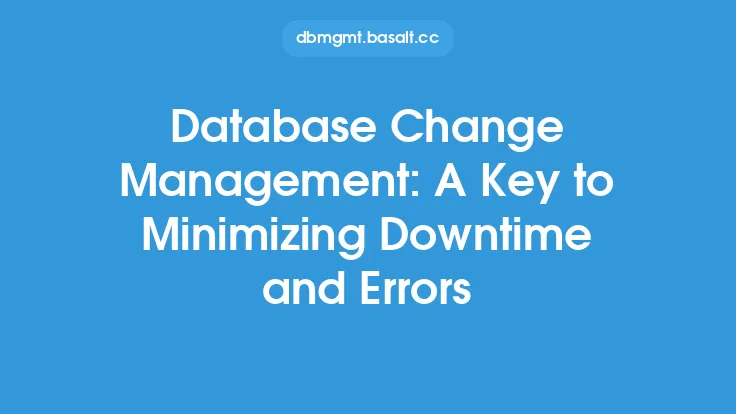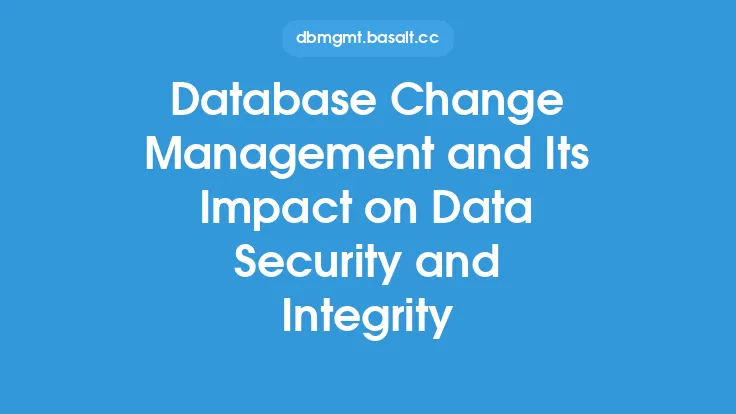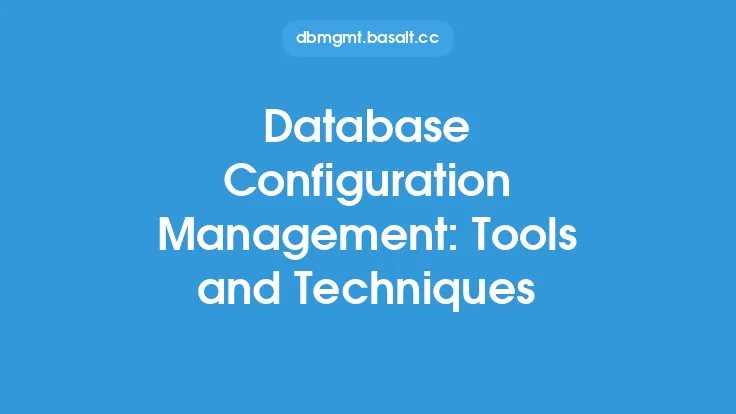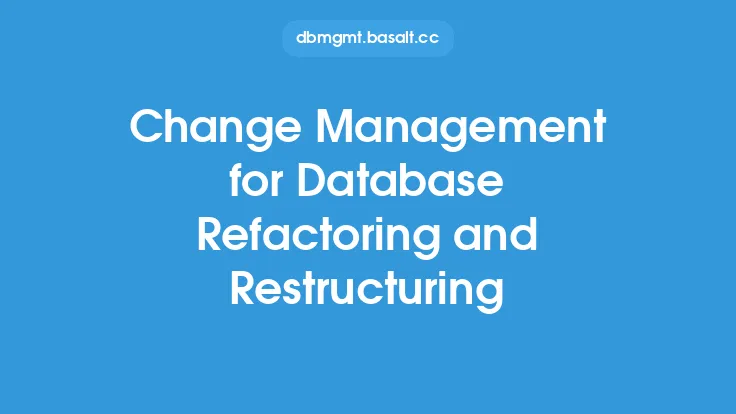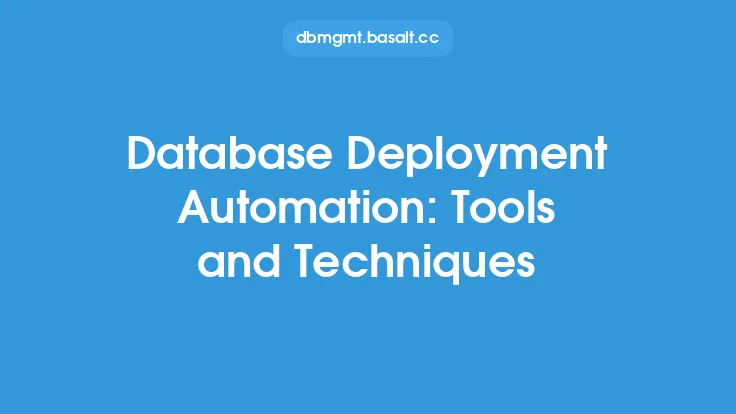Database change management is a critical aspect of database administration, as it ensures that changes to the database are properly planned, implemented, and tracked. One of the key components of effective database change management is the use of database change management tools. These tools help database administrators (DBAs) to manage changes to the database, including schema changes, data changes, and security changes. In this article, we will discuss the selection and implementation of database change management tools.
Introduction to Database Change Management Tools
Database change management tools are software applications that help DBAs to manage changes to the database. These tools provide a range of features, including version control, change tracking, and automation. They help DBAs to identify, assess, and implement changes to the database, and to track the impact of those changes on the database and its users. Database change management tools can be categorized into several types, including database version control systems, change management platforms, and database automation tools.
Types of Database Change Management Tools
There are several types of database change management tools available, each with its own strengths and weaknesses. Database version control systems, such as Git and Subversion, provide a way to track changes to the database schema and code. Change management platforms, such as Redgate and Apex, provide a comprehensive framework for managing changes to the database, including change tracking, automation, and reporting. Database automation tools, such as Ansible and Puppet, provide a way to automate repetitive tasks, such as backups and updates.
Selection Criteria for Database Change Management Tools
When selecting a database change management tool, there are several factors to consider. The first factor is the type of database being used. Different databases have different requirements, and the tool must be compatible with the database. The second factor is the size and complexity of the database. Larger, more complex databases require more powerful tools. The third factor is the level of automation required. Some tools provide more automation than others, and the level of automation required will depend on the specific needs of the database. The fourth factor is the level of reporting and analytics required. Some tools provide more detailed reporting and analytics than others, and the level of reporting and analytics required will depend on the specific needs of the database.
Implementation of Database Change Management Tools
Once a database change management tool has been selected, it must be implemented. The implementation process typically involves several steps, including installation, configuration, and testing. The first step is to install the tool, which typically involves downloading and installing the software. The second step is to configure the tool, which typically involves setting up the tool to work with the database. The third step is to test the tool, which typically involves testing the tool to ensure that it is working correctly.
Best Practices for Implementing Database Change Management Tools
There are several best practices to follow when implementing database change management tools. The first best practice is to start small, by implementing the tool on a small database or a development environment. The second best practice is to test the tool thoroughly, to ensure that it is working correctly. The third best practice is to provide training to DBAs and other users, to ensure that they understand how to use the tool. The fourth best practice is to monitor the tool regularly, to ensure that it is working correctly and to identify any issues.
Common Challenges and Solutions
When implementing database change management tools, there are several common challenges that may arise. One common challenge is resistance to change, from DBAs and other users who are used to doing things a certain way. Another common challenge is the complexity of the tool, which can be overwhelming for some users. A third common challenge is the cost of the tool, which can be a significant expense for some organizations. To overcome these challenges, it is essential to provide training and support to users, to help them understand the benefits of the tool and how to use it effectively.
Future of Database Change Management Tools
The future of database change management tools is likely to be shaped by several trends, including the increasing use of cloud-based databases, the growing importance of data security and compliance, and the need for greater automation and efficiency. As databases become more complex and distributed, the need for effective database change management tools will continue to grow. Additionally, the increasing use of artificial intelligence and machine learning will likely lead to the development of more advanced database change management tools, which can automate many of the tasks involved in managing changes to the database.
Conclusion
In conclusion, database change management tools are an essential component of effective database administration. They help DBAs to manage changes to the database, including schema changes, data changes, and security changes. When selecting a database change management tool, there are several factors to consider, including the type of database, the size and complexity of the database, the level of automation required, and the level of reporting and analytics required. By following best practices and overcoming common challenges, organizations can implement database change management tools effectively and improve the efficiency and effectiveness of their database administration.
